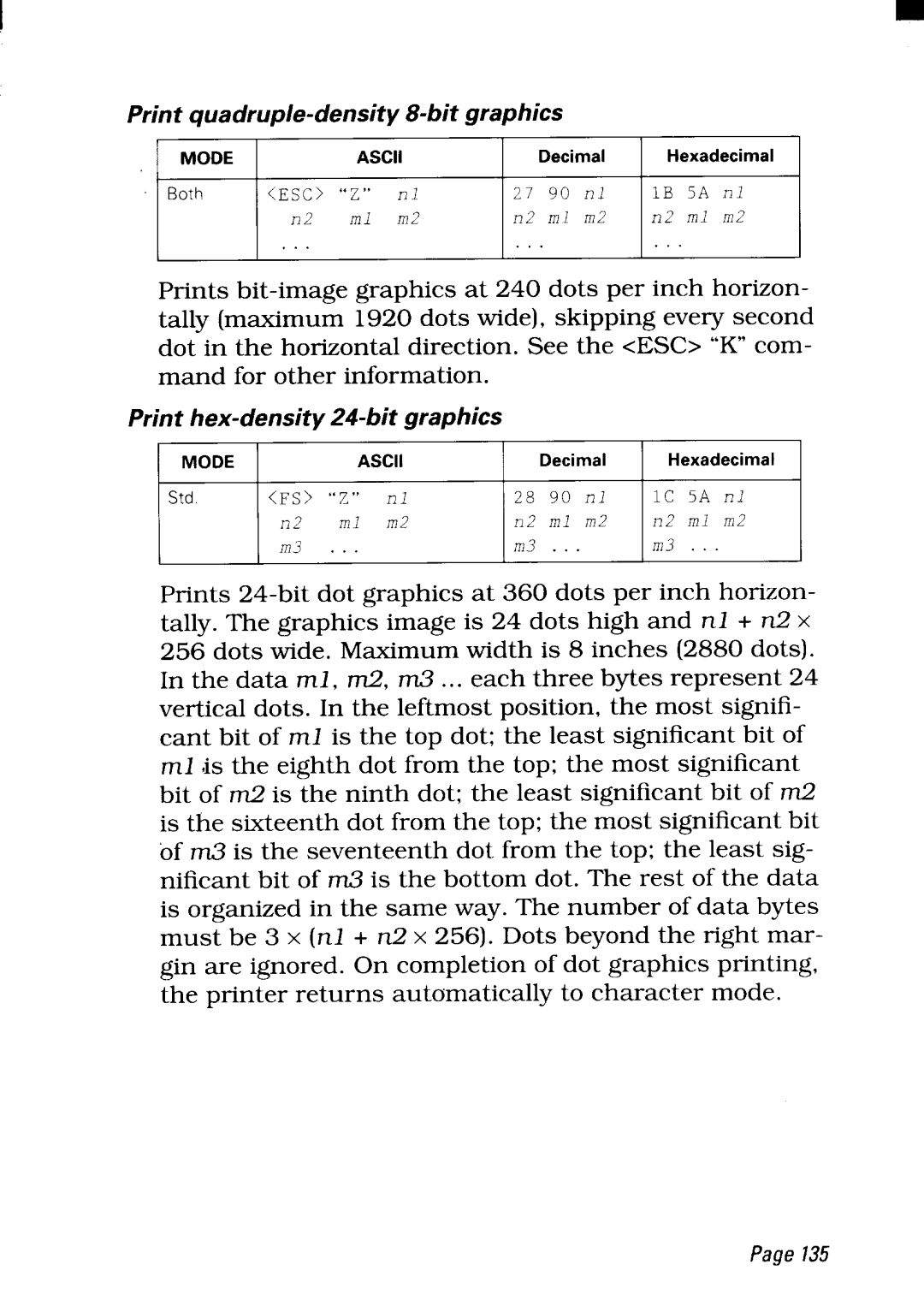
I
Print quadruple-density 8-bit graphics
MODE | | ASCII | Decimal | Hexadecimal |
Both | <ESC> | “Z” | nl | 27 90 nl | IB 5A nl |
| n2 | ml | m2 | n2 m 1 m2 | n2 ml m2 |
| ... | | | .,. | |
Prints bit-image graphics at 240 dots per inch horizon- tally (maximum 1920 dots wide), skipping every second dot in the horizontal direction. See the cESC> “K” com- mand for other information.
Print hex-density 24-bit graphics
MODE | | ASCII | Decimal | Hexadecimal |
Std. | <FS> | “Z” | nl | 28 90 n] | IC 5A nl |
| n2 | ml | m2 | n2 ml m2 | n2 ml m2 |
| m3 | | | m3 . . | m3 . |
Prints 24-bit dot graphics at 360 dots per inch horizon- tally. The graphics image is 24 dots high and rd + n2 x 256 dots wide. Maximum width is 8 inches (2880 dots). In the data ml, ti, m3 ... each three bytes represent 24 vertical dots. In the leftmost position, the most signifi- cant bit of ml is the top dot; the least significant bit of ml !isthe eighth dot from the top; the most significant bit of m2 is the ninth dot; the least significant bit of m2 is the sixteenth dot from the top; the most significant bit ‘of m3 is the seventeenth dot from the top; the least sig- nificant bit of m3 is the bottom dot. The rest of the data is organized in the same way. The number of data bytes must be 3 x (n] + n2 x 256). Dots beyond the right mar- gin are ignored. On completion of dot graphics printing, the printer returns automatically to character mode.

